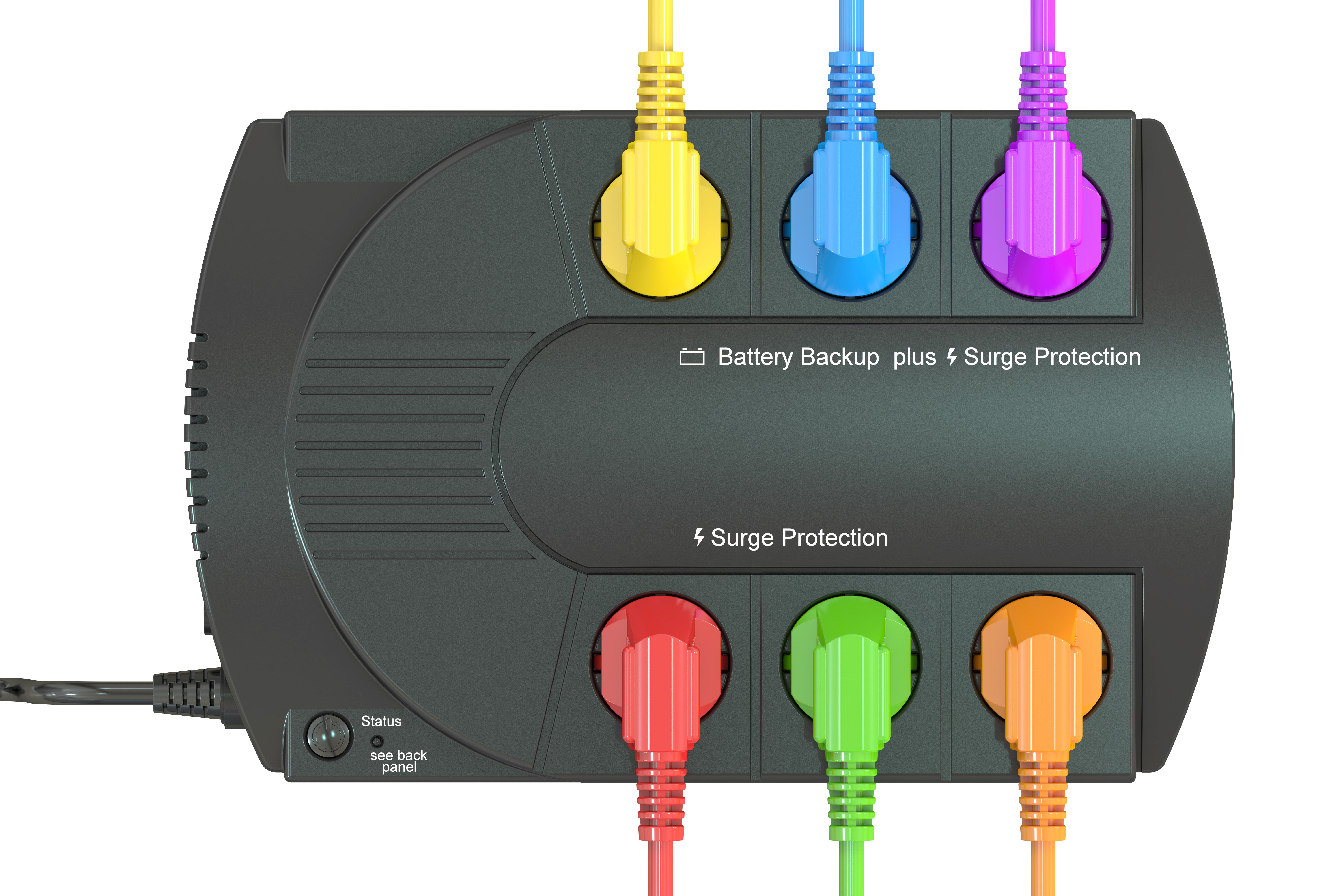
A UPS can prevent damage, data loss and downtime.
U-P-S. For most of us, those three letters conjure up images of a big, brown delivery truck filled with goodies destined for your front porch. But if your office or business is home-based, UPS should represent a kind of protection you won’t work without.
An uninterruptible power supply — UPS — is a battery-powered backup device that provides near-instantaneous emergency power. It provides protection against a loss of power or a momentary surge that can ruin valuable electronics or corrupt irreplaceable data.
A UPS can prevent damage, data loss and downtime.
A UPS can run a computer and other essential office equipment plugged in via its AC outlets for minutes to hours, depending on your needs and the mix of hardware. It can buy you the time necessary to save files and complete a computer shutdown, avoiding lost work. In many situations, it can also keep your internet access up and running for hours.
In other words, if your job depends on electronics, a UPS can save your bacon if the lights go out.
Below, Walton EMC’s residential advisors share what you need to know about this device that can prevent damage, data loss and downtime.
A UPS also doubles as a surge protector, which provides an additional layer of protection for office electronics.
A second, slightly more expensive, option is a line interactive UPS. It incorporates technology that allows it to correct minor power fluctuations without switching to battery. Its key advantage is that it reduces wear and tear on the battery, extending its lifetime. Line interactive UPS models are typically used for consumer electronics, PCs, gaming systems and home theater electronics.
Also, keep in mind that many UPS devices have battery-backed outlets as well as surge-only outlets that aren’t wired into the battery. Surge-only outlets protect nonessential devices like printers from damaging surges, but they will not provide battery backup in the event of an outage. Ensure you have an adequate number of battery-connected outlets for essential electronics.
-
It provides continual power.
When an electrical outage occurs, the UPS’s battery kicks in to provide a continual power source. It keeps AC power running to all connected devices until the battery’s power is exhausted, allowing sufficient time to start a standby power source or properly shut down the protected equipment.
A UPS also doubles as a surge protector, which provides an additional layer of protection for office electronics
-
It protects your essential equipment.
In a home office, a UPS is typically used to protect computers, peripherals, modems and routers, and telecommunication equipment or other electrical equipment where an unexpected power disruption could cause a serious business disruption or data loss.
-
It’s a good investment.
A highly rated UPS system appropriate for home office use sells for about $80 to $200 in a computer or office supply store. That’s a fraction of the value of the equipment, data and productivity it protects. Like any insurance, it can also provide a remarkable amount of peace of mind.
-
It’s an easy DIY install.
You simply plug the UPS into the wall outlet, plug your equipment into the UPS outlets and turn on the UPS. Most UPS systems have extra features like communicating with a computer or customizing the default settings, but using the extra features is optional.
-
Two design types are ideal for home offices.
A standby UPS is what the average home office will require. This system allows equipment to run off utility power until the UPS detects a problem, at which point it switches to battery power. Standby models are designed for consumer electronics, entry-level computers, POS systems, security systems and other basic electronic equipment.
A second, slightly more expensive, option is a line interactive UPS. It incorporates technology that allows it to correct minor power fluctuations without switching to battery. Its key advantage is that it reduces wear and tear on the battery, extending its lifetime. Line interactive UPS models are typically used for consumer electronics, PCs gaming systems, and home theater electronics
-
Size matters.
Correctly sizing your UPS solution is key to getting the protection and runtime you need in the event of an outage. You’ll need to determine how much power is required to operate your critical office equipment and how long the UPS will need to support this equipment (called runtime). To help you determine your needs, check out these calculation/selection tools offered by three popular UPS unit manufacturers:
-
Outlet options are important.
Pay close attention to the quantity, position and the protection capabilities of a UPS model’s outlets. Be sure the outlets are adequately spaced to accommodate a direct plug-in of your devices. This can be tricky if you have large “wall wart” style AC adapters or wider-than-average AC plugs. Never plug a power strip or other extensions into a UPS outlet, as it increases the risk of electrical fire.
Also, keep in mind that many UPS devices have battery-backed outlets as well as surge-only outlets that aren't wired into the battery. Surge-only outlets protect nonessential devices like printers from damaging surges, b ut they will not provide battery backup in the event of an outage. Ensure you have an adequate number of battery-connected outlets for essential electronics
-
Look for extras.
Beyond the primary function of protecting your equipment and data in the event of outages or surges, some UPS models also offer convenient USB charging ports and energy-saving features. Some models have energy-saving outlets that can detect when energy is being wasted by an idle peripheral device and will turn it off. Meanwhile, other outlets stay on to support devices that operate continuously, such as wireless routers and DVRs.